Industry Insights: IP production, automation, cameras, and cutting-edge trends

Subscribe to NewscastStudio for the latest news, project case studies and product announcements in broadcast technology, creative design and engineering delivered to your inbox.
Last year saw an immediate shift in many broadcasters’ studio workflow due to the COVID-19 pandemic. This spring, we’ll be looking at how the lessons from work from home and reduced staffing will impact future productions.
In this installment of our Industry Insights roundtable, our experts on camera robotics look at IP production, automation and other trends we should expect to see this year.
Make sure to read the rest of our Industry Insights series, including:
How do you see the move towards IP and automation continue to change or impact camera control and studio robotics?
“We’re already starting to see the impact of the move towards IP in projects that are looking to centralize and virtualize as much as possible so that resources are shared across multiple sites. This requires a centralized robotic control architecture with the ability to easily connect to robots in any studio from any control room – allowing for both central and local control of the same robots, depending on the circumstances,” said Karen Walker, VP of camera motion systems at Ross Video.
“Minimizing network traffic and increasing tolerance to network latency are keys to enabling this type of architecture, particularly when the control room(s) can be separated from the robots by thousands of miles. This is where our native IP control architecture really shines, where all the details of the presets and moves are stored in the robot itself, inherently reducing latency and all the control system needs to do is tell the robot which shot to recall,” said Walker.
“Vinten’s Studio Robotics have been native IP for most of the past two decades, and this has made them ideal for remote operation, and flexible use. In some areas, complete IP adoption has been slow and restricted, due to the massive non-IP infrastructure already installed throughout the studio. As this changes, IP allows for easy reassignment of devices, and this is going to provide for much more dynamic, multi-purposing of studios and the devices assigned to them,” said Neil Gardner, Vinten’s product manager.
“IP video distribution aids the introduction of more automation into the wider production facilities, but in itself does not impact robotics in a significant way. Automation is very tightly integrated with robotics and will always be so,” answered James Eddershaw, managing director at Shotoku Broadcast Systems.
“Telemetrics has been using IP control in our products for a long time but with the increased move to video over IP, it has made robotics even more important. Previously, sending video around a facility was the biggest issue. IP is a great solution to this problem. With these advanced networks and devices, we will continue to see better video quality and lower latency. This will allow for centralized control and automation and dramatically reduce the costs required for broadcasters,” said Michael Cuomo, VP at Telemetrics.
What other trends should we be looking for in the year ahead?
“We mentioned that robotic solutions will get smarter, intelligence in the solutions will expand in both the camera control and the responses to certain conditions. Robotics will get smaller and we will see them more in non-traditional studio applications, sports will increase the use significantly and size will be important to get close to the action. The need to travel as we have seen has declined and people are finding alternative solutions to get their message across, there will be more quality pop-up studios and in corporate applications, again the need for easy, simple set up and discrete, compact solutions which can be controlled from elsewhere,” Walker explained.
“The biggest trend is likely to be an accelerated move towards studios that are configured with robotic products in order to enable remote production if needed again at short notice. Many of these will be hybrid studios, that can continue to operate as manual camera studios as needed, but can either switch between manual and robotic as needed for different content production, or can switch to 100% remote robotic operation if necessary due to future restrictions. This will, without a doubt, lead manufacturers to extend and refine the level of autonomy possible with the remote camera systems, and design products that are less reliant on having people co-located with the equipment,” said Gardner.
“Greater use of more dynamic camera movement within robotically operated studios. PTZF is definitely not enough for many news productions any more, even smaller facilities will look towards fully robotic pedestals or even floor/ceiling rail cameras to generate more interesting and engaging programs. More use of VR/AR, combined with the more ambitious camera moves, will also increase in daily news shows, not just occasional major events but as a regular part of telling the news stories of the day,” Eddershaw said.
“As broadcasters have settled into the new normal, they’ve relied more and more on DIY workflows. As such, in the year ahead we’ll see more powerful solutions married with increased mobility, bringing more advanced broadcast features into at-home environments,” predicted Bob Caniglia, director of sales operations for Blackmagic Design.
“AI has been and will continue to be a big trend in the year ahead. It’s being heavily integrated into our products to make them easier to use. The other big trend we’re seeing is remote setup and support. Before, we would always have to send out resources to get a system configured, but we’re doing more remote commissioning than ever before. This is a huge benefit because customers can get the same support that normally would’ve required on-site trained technical staff and also saves on travel costs. With remote training and troubleshooting, staff does not need to be as technical, especially when there is just a single person operating out of a home studio,” Cuomo said.
“Terrestrial broadcasting is continuing to wind down, as is cable provision, due to the enormous demand for OTT, on-demand content access and delivery. As more and more podcasts and OTT programs are produced, the impact of robotic cameras and production workflows will continue to increase. Automated voice-activated camera switching will be coming on strong, again with no reliance on human operators in many cases,” said Rush Beesley, president of Rushworks.
Participants
Karen Walker – Ross Video
Neil Gardner – Vinten
James Eddershaw – Shotoku Broadcast Systems
Michael Cuomo – Telemetrics
Rush Beesley – Rushworks
Bob Caniglia – Blackmagic Design
Subscribe to NewscastStudio for the latest news, project case studies and product announcements in broadcast technology, creative design and engineering delivered to your inbox.




tags
Automation, Blackmagic Design, Bob Caniglia, Broadcast Automation, IP, IP Production, James Eddershaw, Karen Walker, Michael Cuomo, Neil Gardner, OTT, Robotic Camera Control, robotic cameras, Ross Video, Rush Beesley, Rushworks, Shotoku Broadcast Systems, Telemetrics, Vinten
categories
Broadcast Automation, Broadcast Engineering News, Broadcast Equipment, Camera Control & Camera Robotics, Camera Tracking, Cameras, Featured, Industry Insights, IP Based Production, Studio Technology, Voices